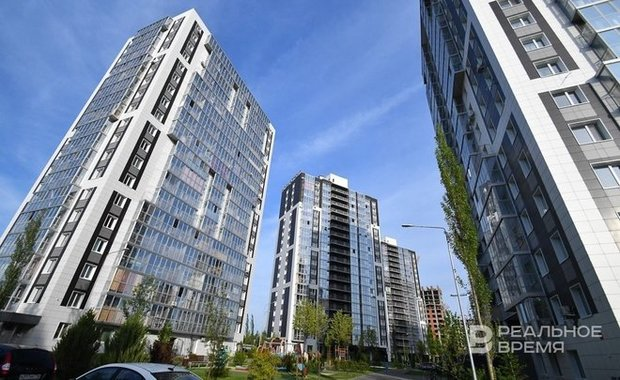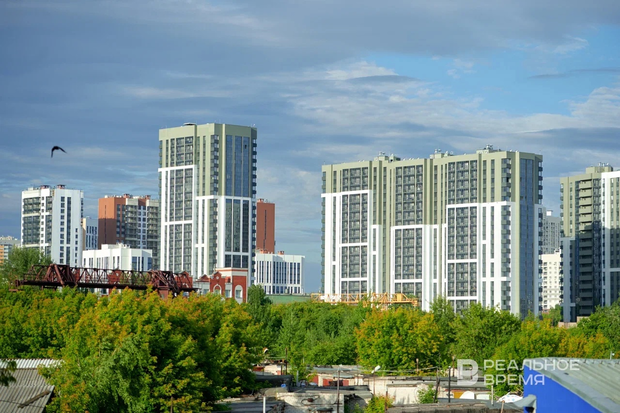‘New place for savings’: the phenomenon of mortgage rise in 2023
This year promises to break mortgage records of pre-crisis 2021

Despite the efforts of the Russian Central Bank on tightening preferential mortgage terms for new-builds, the housing bubble continues inflating. Russian banks have granted over 825,000 mortgages for more than 3 trillion rubles in the first half of the year alone — this is 1.5 times more than a year ago. Read in Realnoe Vremya’s analytic staff’s report why mortgage keeps growing amid geopolitical uncertainty and economic stagnation in Russia, if the second half of the year will be more fruitful for bankers and what the sudden rollback of preferential programmes can lead to.
The number of mortgage deals in Tatarstan in the first half of the year has risen by 23% compared to the same period in 2022. In the last six months, according to the Tatarstan office of the Russian State Registry, there have been registered over 56,500 mortgages, 45,900 were in the first half of 2022. Most mortgages were registered for residential areas — 27,050 (+26.7%). Land parcels have been purchased more actively through a mortgage too — over 19,000 (+17.8%) instead of 16,000 in 2022. A 30% growth of mortgages for non-residential areas became a peculiarity of 2023: if 957 mortgages of this kind were registered from last January to June, this year the number is more than 1,200.
The mortgage growth pace in Russia by early June has reached 21%, said head of the Department of Financial Stability of the Central Bank Yelizaveta Danilova at the Russian Central Bank’s Financial Congress. At the same time, the share of “bad” loans doesn’t exceed 0.6%. However, the price difference between new-builds and existing homes in some regions already reaches 40-60%. The growing price gap between new and existing homes concerns the regulator. The price gap started to grow in 2020, however, preferential programmes for new-builds became one of its causes.

Tatarstan is today sixth in the number of mortgages granted in 2023. The republic is behind Moscow, Moscow Oblast, Saint Petersburg, Tyumen Oblast and Krasnodar Krai.
Preferential programmes account for 95% of mortgages in the new housing market
“The average monthly mortgage issue pace from March to June are close to record-high numbers after some decline earlier this year: 150-170,000 loans a month. Preferential programmes have supported the market in the first half: their share surpassed 95% in the new housing market and is about half of the total amount of mortgages,” noted head of the Analytic Centre of DOM.RF Mikhail Goldberg.
The expert thinks that the tightening regulation of the mortgage market and the rise in the key rate can slow down the issue of mortgages by the end of the year. Nevertheless, the amount of mortgages in 2023 can top 6 trillion rubles and become the highest result in the history of mortgage issue.

Higher demand for new-builds caused significant revival in the construction sector. Monthly transfers to escrow accounts have exceeded 300 billion rubles since March, which considerably goes ahead of last year’s indicators. In turn, developers increased supply: projects with an area of 21.4 million square metres have been delivered in the market in the first half (+21% against the first half in 2022). As a result, the total amount of housing built in Russia has updated the pre-pandemic high and totals 101.1 million square metres.
According to the Analytic Centre of DOM.RF, today the housing market is close to the balance between demand and supply. The level of sold flats at the moment (30%) corresponds to the normal project financing model given the current completion status of the portfolio (43%). Almost 60% of the housing that is due to be finished this year has been sold out, while the fall in general sold-out rate has to do with the active launch of new projects whose launch is scheduled for 2025 and later.

The cancellation of the cheap mortgage heated the market
“The mortgage growth, first of all, was related to the fears of rate rises. The statements about growing mortgage rates appeared as early as last December. The Central Bank constantly discussed that something had to be done to the subsidised mortgage. Developers took advantage of the situation to make people willing to buy flats sign deals,” commented Director of Flat real estate agency Ruslan Khabibrakhmanov. “A big number of deals were signed by clients due to this.”
According to him, such a situation was characteristic before 1 May — the lowest threshold for subsidised rates was raised then. The number of rates suddenly has reduced since May because the rates are no longer so attractive. “The Central Bank’s mood hasn’t changed, and the rate is going to be raised again some time later, but this isn’t any provocative factor,” Khabibrakhmanov says. “Now we see a rise of purchases, mostly because of the dollar rate. People understand that the ruble is devaluating and one’s savings need to be found a place again. People have always chosen real estate for these purposes.”
Forecasts for the second half of 2023 will also depend on the decision of the Central Bank on further rise in the key rate. “If the key rate rises, the number of people willing to buy a house with a mortgage will increase,” thinks the expert. “If inflation goes up, the Central Bank will anyway increase the refinancing rate to reduce the inflation pace, which, in turn, will entail a fall in the number of deals in the market.”
“To buy now or never”

Also, Sberbank’s decision to lower the first instalment from 15 to 10% made an impact on the mortgage boom in Russia. Compared to 2022, everything that will happen in 2023 will seem an optimistic scenario, notes Gallyamov: “The mortgage rate will likely be growing because external borrowings and inflation will influence it.”
On the threshold of mortgage crisis
“The mortgage bubble is inflating amid economic stagnation. This contradiction creates prerequisites for a mortgage crisis,” thinks Maxim Osadchy, head of the analytic department of BCF bank. “The state’s stimulating programmes, various types of preferential mortgage — a 8% mortgage, family mortgage, Far Eastern and other mortgages — inflate this mortgage.”

Also, the demand for new-builds helps the construction industry grow. “Since labour migrants from Central Asia are a significant part of the workforce in the construction industry, the preferential mortgage turns out to attract a mass inflow of labour migrants, first of all, from Tajikistan, Uzbekistan and Kyrgyzstan,” the expert continues. “Migrants live in groups, far from comfortable conditions. They are mainly young men, often with little education. There are numerous violations of law, mass frights, conflicts with the local population in places of concentration of labour migrants, which intensifies social tensions. Favourable conditions for radicalisation of migrants are created.” Also, billions of dollars leave Russia because they send a considerable amount of money to their families at home.
As a result, state stimulation of mortgage as well as any external interference in the economy leads to its deformations.
“The preferential mortgage is a new instrument for Russians. Inexperienced people see only a low rate and don’t understand that the home price is often 20-30% higher than the market price. Dishonest dealmakers use this catch. It is especially convenient when the financial and industrial group has both a bank and a developer. It is a handy marketing step: the mortgage rate is much lower than the market level and the home price is much higher. And naïve people grab such flats as hot cakes,” the expert explains.

But the preferential mortgage is a “low-quality” mortgage aimed at people with a relatively low income. “This category of people is more vulnerable to macroeconomic risks. If a crisis breaks out, the poor suffer first. If a borrower cannot repay a mortgage, the flat is thrown into the market, mass house sales cause a price collapse. The mortgage bubble bursts, a mortgage crisis starts that can grow into a financial and economic crisis. Precisely such a scenario took place in the USA in 2007 and 2008,” Osadchy warns.
The regulator sees threats linked with the preferential mortgage, however, it cannot be terminated quickly, otherwise the market will inevitably fall: “The Central Bank is cooling the overheated mortgage market by tightening regulation and bringing too greedy bankers into sound sense. The tightening monetary policy, rising key rate also help the mortgage market cool down,” he concluded.